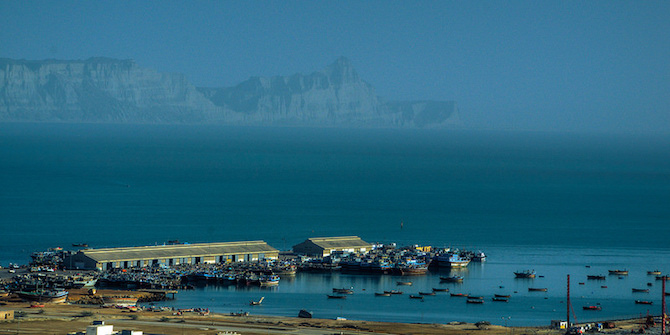Afghanistan’s opium economy continues to flourish. At the same time, the country has seen the largest international military and civilian missions in recent history. How is that possible? Several attempts were made to link illicit drugs with insurgency and terrorism. But why haven’t states taken this seriously? Jorrit Kamminga (Clingendael Institute & Oxfam Novib) discusses his research into securitisation theory and drug policy, and how it might explain why so little has been done to support Afghanistan’s counter-narcotics policies
In my recent article for the International Journal of Drug Policy (IJDP), I had the chance to go back to a central part of the theoretical framework of my PhD research: securitisation theory of the Copenhagen School of Security Studies. Securitisation (as nicely explained by Ole Waever in this video) can be defined as presenting an issue as an existential threat, creating the need for the adoption of emergency measures and actions that go beyond the normal boundaries of political options states have at their disposal. The existential threat to the state (or a group of states) might not be real, but it is presented in this way.
In my PhD thesis I linked securitisation to the case of drug policy in Colombia. I think I managed to put together an interesting model to analyse international support for counter-narcotics programming (particularly alternative development projects falling under supply reduction strategies). However, when discussing the findings with the panel of examiners, it turned out I probably got one of my basic assumptions backwards. I predicted that states would be more eager to support countries like Afghanistan or Colombia if the right linkages were made to new areas where security threats could be identified, such as economic security or environmental security. I thought they would care enough about drug control in source countries, if they would be convinced that their security was at stake.
However, this assumption would only be convincing if examples could be found around the world where the link between illicit drugs and security – real or perceived – did indeed lead to more collaboration and support. I decided to turn to the case of Afghanistan for further analysis, which resulted in the IJDP article. In this case, there were several attempts (so-called ‘securitisation moves’) to link the illicit opium economy to the security threat of the Taliban insurgency.
One consistent attempt to securitise the Afghan opium economy came from the United Nations Office on Drugs and Crime (UNODC)’s former Executive Director Antonio Maria Costa. His preface to the Afghanistan Opium Survey 2006 addressed the issue of insurgents reaping the profits of the illegal opium economy. In following years, he reinforced this narrative of linking opium to terror. Costa highlighted the “symbiotic relationship” between drug traffickers, insurgents and terrorist groups such as the Taliban and Al Qaeda. He directly called on NATO to support counter-narcotics efforts as “(…) drug trafficking and insurgency live off of each other.”
On the military side, General Dan McNeill, commander of the International Security Assistance Force (ISAF) between February 2007 and June 2008, actively raised these concerns as well and, within the limits of the ISAF mandate, pushed for more military engagement on counter-narcotics policy. He inter alia remarked: “when I see a poppy field, I see it turning into money and then into IEDs [improvised explosive devices] and Kalashnikovs” and “illegal narcotics is the insurgency.”
The securitisation moves of Costa and General McNeill did not lead to securitisation but got stuck at the level of politicisation, which can be understood as keeping the illicit drugs economy on the political agenda in Afghanistan. While it never became a top priority, it must be said that counter-narcotics policy did lead to various spikes of attention and to the implementation of serious counter-narcotics activities and campaigns across the country. I mention some examples in my IJDP article.
But why is that not the same as securitisation? Some authors suggest that militarisation of drug control in Afghanistan proves that securitisation happened. I admit in my article that limited militarisation of counter-narcotics policy did take place, but that that this was not the result of securitisation. However, to prove this, I needed to explain what securitisation would have looked like in practice.
Firstly, I argue that with successful securitisation, the counter-narcotics support policy of the international community would have received a much higher priority since 2001. It would have been a separate strategic objective of the highest political and military priority instead of merely being subordinated within broader development, state building or counter-insurgency objectives. As part of these broader strategies, the attention given to counter-narcotics was inherently limited and the international support role was kept mostly indirect and restricted.
For example, as part of counter-insurgency strategy, counter-narcotics did not receive the full backing of the international military as participation in eradication efforts could alienate the population and lose the community support that was so essential for the success of that strategy. Similarly, much of the state building efforts depended on establishing alliances with regional and local power holders, actors that are crucial for the success of any eradication campaign but whose broader interests and priorities also had to be taken into account for the success of other development programmes.
Secondly, successful securitisation would have enabled both civilian and military actors to go beyond their mostly indirect and restricted support role. Despite the limited militarisation of counter-narcotics efforts, it is telling that not even the military troop surge under president Obama resulted in a more direct and structural support strategy.
Lastly, successful securitisation would probably also have resulted in the implementation of one of the most draconian drug policies, the aerial spraying of opium poppies. This strategy is a classic example of what critics call the militarisation of drug policy or simply the ‘war on drugs’. Despite a push from the US to implement spraying in Afghanistan, there was no international consensus on this policy and the Afghan government disagreed with it.
So while securitisation did not happen, Afghanistan does offer an example of international attempts to securitise the opium industry through the political rhetoric of linking illicit drugs with insurgency and terrorism. While this political rhetoric existed, hardly any drastic or emergency measures were taken by the Afghan government or the international community beyond the involvement of the military in manual eradication and the limited, indirect involvement of NATO forces in interdiction efforts.
For the international community at large, as well as for those countries directly supporting Afghanistan, the Afghan illegal opium economy is no top priority and it never was since 2001. Spikes of attention did produce big budgets and vast counter-narcotics programming but failed to create sustained effort and sustainable impact.
The bottom line is that the biggest and longest military intervention and civilian engagement in recent history was unable and partly unwilling to effectively address Afghanistan’s illicit opium economy. Laissez-faire trumped a robust counter-narcotics support strategy. Securitisation attempts failed to change this reality. Instead of rallying states around common action through securitisation efforts, it is more the other way around: failed securitisation confirms that states do not consider international drug control a top priority, let alone an existential threat.
This article gives the views of the author and not the position of South Asia @ LSE blog, nor of the London School of Economics. Please read our comments policy before posting. Featured image: Solider in Military Uniform, Afghanistan. Credit: Pixabay, Army Amber.
This post is based on his recent article: “States simply do not care: The failure of international securitisation of drug control in Afghanistan.” International Journal of Drug Policy. 68 (2019): 3-8.
Jorrit Kamminga, PhD is Senior Visiting Fellow at the Clingendael Institute and Policy Lead Inclusive Peace and Security at Oxfam Novib.








Sometimes the people call it the opiom or drug war. In fact the war between politicians/ thier powerfull brothers/ relatives and provincial opponents. The best example can be Hamid Karzai’s brothers/ relatives and thier opponents provincial drug conflict. The war of insurgency and terrorists are not rely on drug business
, the most illicit income goes to national and thier international counterpar packates. We have many examples of arresting in Kabul international airport of politicians and/ or thier relatives. It is difficult to accept that insurgency feed through drug business/ income.